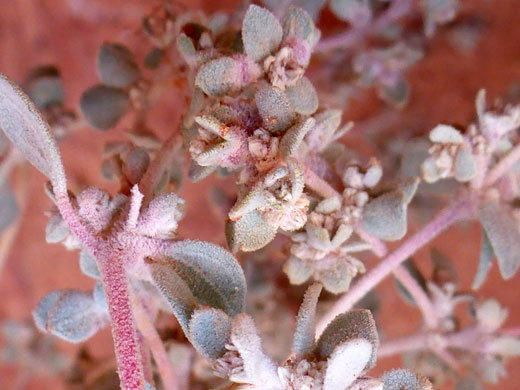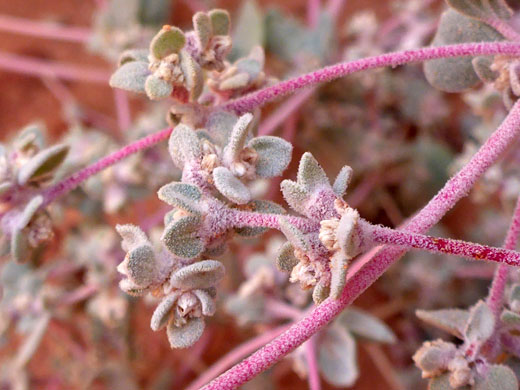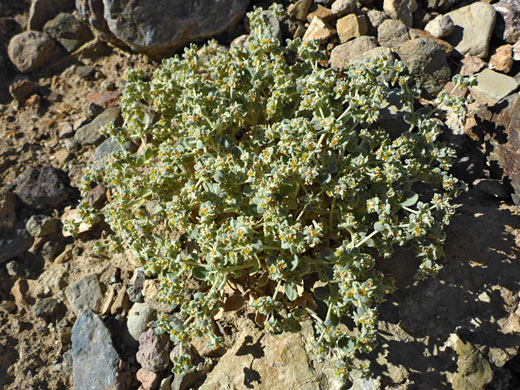Tidestromia Suffruticosa, Shrubby Honeysweet
Plants > Wildflowers > Amaranthaceae > Tidestromia Suffruticosa
Common name:
Shrubby honeysweet
Family:
Scientific name:
Tidestromia suffruticosa
Main flower color:
Range:
The Mojave Desert, and neighboring areas; also a few locations in New Mexico and Texas
Height:
Up to 2 feet
Habitat:
Dunes, rocky paces, flats, washes, roadsides, on saline and alkaline soils, from sea level to 5,000 feet
Leaves:
Circular, ovate or kidney-shaped, up to 1.8 inches long, on stalks up to 1 inch
Season:
April to December
Stems, leaves, pedicels and sepals of tidestromia suffruticosa, a small shrub, are densely covered with short, forked hairs, often candelabra-shaped - giving the plant a whitish sheen, though the length and color of the hairs are quite variable. The branched stems are usually red, sometimes pale green, while leaves are gray-green.
Flowers are inconspicuous, borne in small clusters (one to three) at the leaf nodes; they have five tepals, yellow to brown in color - the outer three larger than the inner two - enclosing a ring of five stamens alternating with five tiny, triangular appendages (pseudostaminodes).
Two varieties are recognized - var suffrutico, with ovate leaves, and var oblongifolia with oblong leaves, though the difference is not well-defined.
Flowers are inconspicuous, borne in small clusters (one to three) at the leaf nodes; they have five tepals, yellow to brown in color - the outer three larger than the inner two - enclosing a ring of five stamens alternating with five tiny, triangular appendages (pseudostaminodes).
Two varieties are recognized - var suffrutico, with ovate leaves, and var oblongifolia with oblong leaves, though the difference is not well-defined.
All Contents © Copyright The American Southwest | Comments and Questions | Contribute | Site Map







